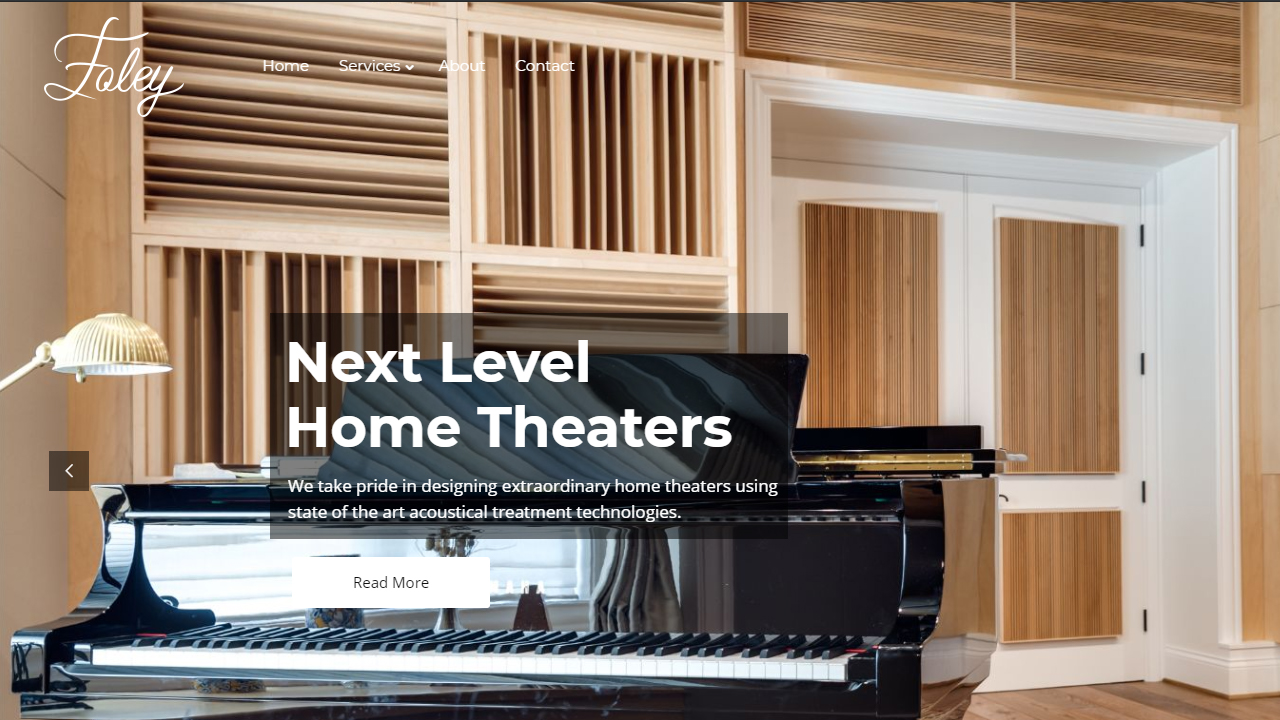Foley Acoustics was created for the acoustic design of critical listening audio and video environments. The acoustic design process requires that all noise-related issues be addressed first and foremost. Noise is the arch-enemy of audio. It decreases room resolution and raises the noise floor in the room. Our goal is to make the room as quiet as location and budget will allow. A quiet room increases musical enjoyment by allowing more music and less noise. Room design is a process where you must do a lot of little things right and in the correct sequence or order.
Once we have all the noise issues resolved, we must use the correct room size and volume to match usage. Theaters require more volume than two-channel rooms. Mix rooms are different than drum rooms. Choosing the correct room size and volume minimizes room distortion in the low-frequency registers and minimizes the low-frequency treatment requirements. A properly treated room with size and low-frequency treatment requirements met will produce a room with the same definition and separation as in middle and high-frequency energy. There is no reason we can not hear the attack and decay rates of low-frequency energy as clearly as we do the middle and high frequencies.
It is the middle and high-frequency energies that contain our vocals where we connect emotionally to content. We must be able to hear everything in the recording or live presentation. This resolution requirement demands that we use the proper TAP. This stands for type, amount, and position of all treatments. Treatments include two types. There are absorption and diffusion. Absorption requires a delicate balance of rate and level. Just because a technology absorbs energy does not make it a correct type to use for audio. Music and voice are different than noise. If you use too much absorption the room sounds dead. If you use too little, the room is too live. We use absorption to minimize reflection impact and increase definition then we use diffusion to increase the separation and add “air” to the presentation.
Room design for critical listening environments is a process. You must first address any noise leaving or entering the room. Once all noise issues have been resolved you can then focus on absorption and diffusion technologies to achieve your sonic goals on the inside of the room. The materials you use in your design determines the sound quality you receive. We pay special attention to the material types to achieve our stated goals. We use natural woods and fabrics and we stay away from toxic noise technologies such as building insulation and building construction materials that were never designed for critical listening environments. We use only our proprietary carbon technology for low-frequency management along with our own foam technology specifically designed for music and voice.
Visit foleyacoustics.com for more information.







